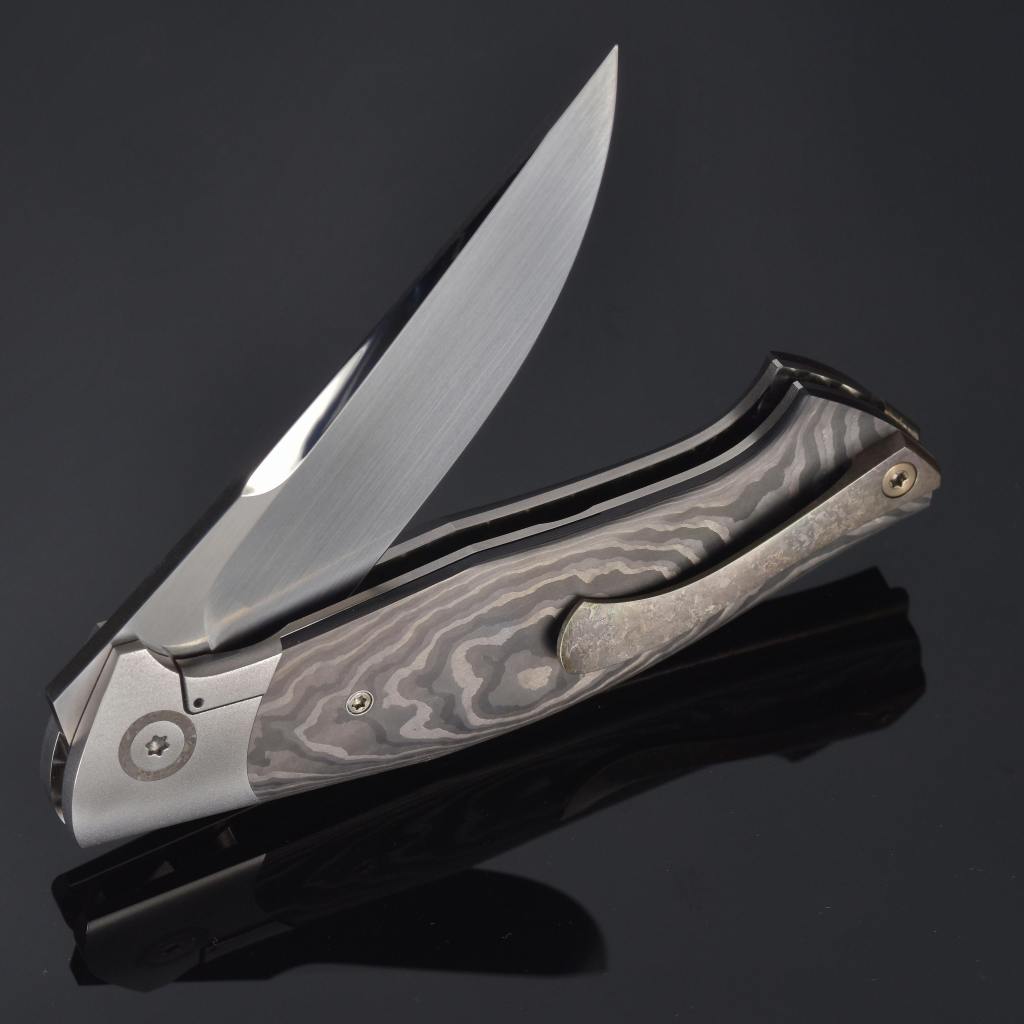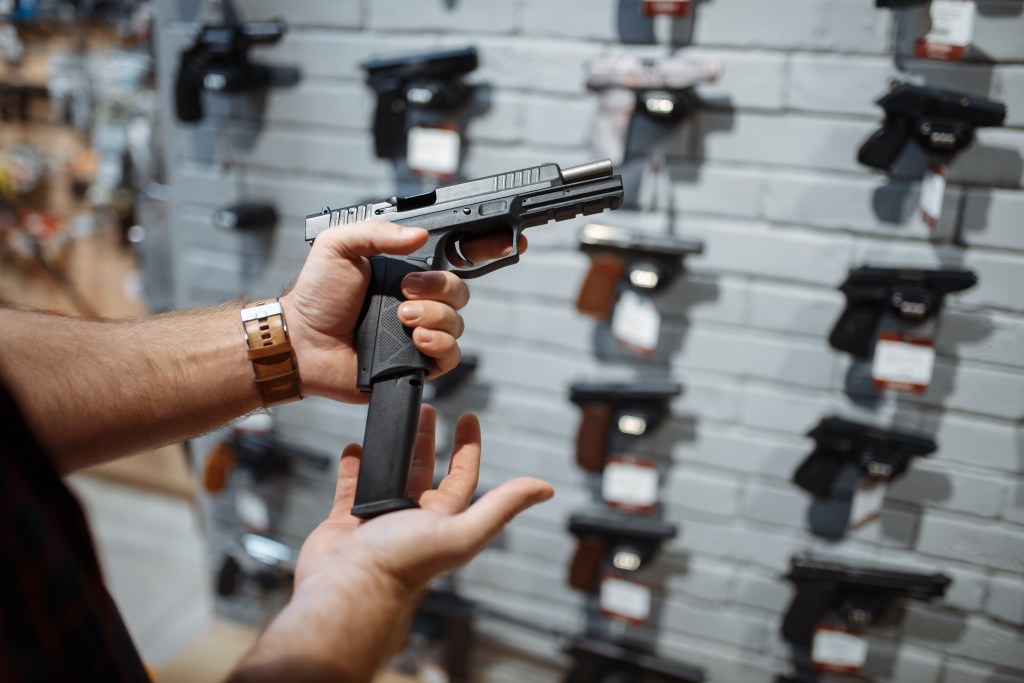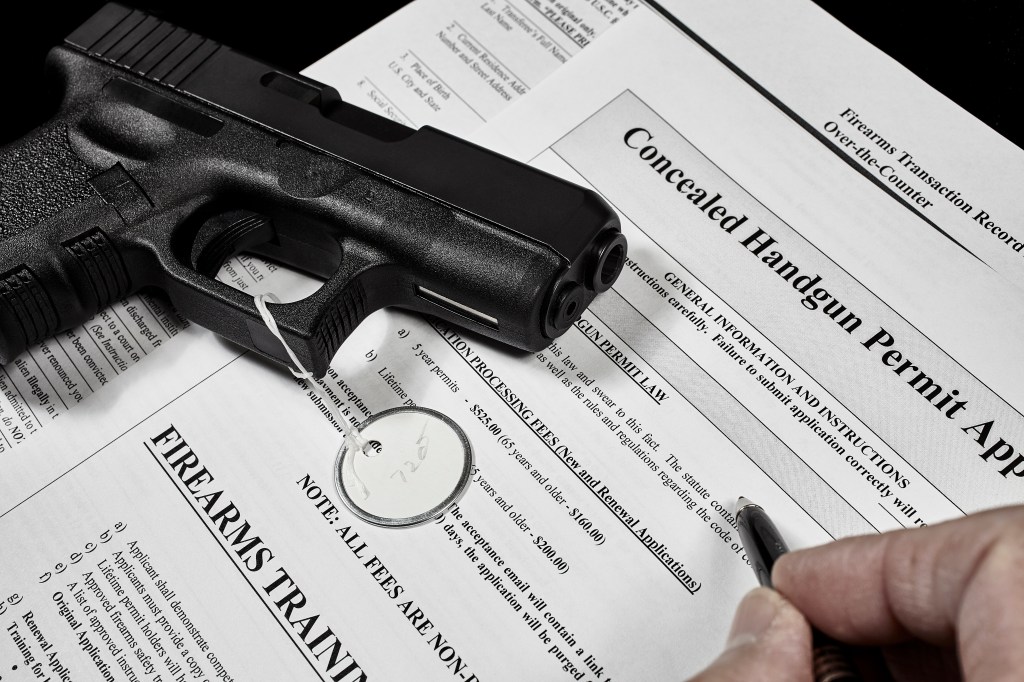Mastering Weapon Laws: Your Essential Guide to Firearm and Knife Ownership
Navigating the world of weapons ownership can often feel like a complex maze filled with legal jargon and stringent regulations. Understanding the legal landscape is crucial whether you’re a seasoned collector, a hunting enthusiast, or someone considering purchasing your first firearm or knife for personal security.
This guide illuminates the essential legal insights into weapons ownership, unraveling the intricacies of firearm ownership laws and knife legal requirements and explaining why adhering to these regulations is not just a matter of legality but also of responsibility and safety.
Join us as we delve into weapons ownership laws, offering guidance, clarity, and the knowledge you need to navigate this complex area confidently and legally.
History of Weapon Laws
The evolution of firearms legislation and the historical development of knife regulations have been significant over time, reflecting society’s changing views on public safety and individual rights.
The history of weapon laws in the United States is complex, with about 20,000 firearm and weapon laws existing across local, state, and federal levels. Interestingly, most gun laws are more concerned with zoning regulations for gun stores rather than directly regulating the sale and possession of guns themselves.
Federal gun laws
The earliest federal law for guns can be traced back to the Second Amendment in the Bill of Rights, which grants U.S. citizens the right to bear arms. However, it wasn’t until 1934 that the first national gun control legislation, the National Firearms Act, was passed. This legislation aimed to deter crimes committed by gangs by imposing regulations on the manufacture and sale of firearms.
The Gun Control Act of 1968 marked another significant milestone, enacted in response to the assassinations of President John F. Kennedy and Dr. Martin Luther King Jr. This law introduced measures such as prohibiting the import of guns with “no sporting purpose,” imposing age restrictions, and preventing felons and the mentally ill from purchasing guns. It also required all imported and manufactured guns to have a serial number.
In 1986, the National Rifle Association’s (NRA) efforts to weaken the Gun Control Act of 1968 led to the passage of the Firearms Owners’ Protection Act. This reflects how lobbying and political advocacy can influence firearm legislation.
State laws
State laws have also played a crucial role in regulating firearms, often passing their gun laws in response to perceived gaps in federal legislation. By crafting laws tailored to the specific concerns and conditions within their borders, states aim to address the complexities of gun control in a manner that is both effective and reflective of their constituents’ values.
This multi-layered approach to firearm and weapon regulation highlights the ongoing debate and evolution of laws that balance public safety with individual freedoms.

Federal Firearms Laws Explained
Understanding the complexities of federal firearm laws, regulations enforced by the Bureau of Alcohol, Tobacco, Firearms, and Explosives (ATF), and the necessity for compliance is crucial for anyone involved in the sale, ownership, or handling of firearms in the United States.
It’s important to recognize that the ATF plays a significant role in regulating firearms and ensuring compliance with federal statutes. This involves overseeing the application of various laws designed to control the distribution and use of weapons within the country.
Categories of prohibited individuals
Federal laws and ATF regulations encompass a wide range of stipulations, including, but not limited to, the prohibition on certain individuals’ possession of firearms.
These categories of prohibited individuals include felons, illegal aliens as well as aliens lawfully admitted under non-immigrant visas (excluding green card holders), drug users, individuals subject to a domestic restraining order, persons convicted of domestic assault or domestic violence, fugitives, and individuals who have received a dishonorable discharge from the military/armed forces.
Understanding these restrictions is essential for firearm owners and dealers to ensure compliance and avoid legal complications related to unlawful possession.
Specific offenses and firearms
Moreover, the federal statutes outline specific offenses related to firearms, such as the use or carrying of a firearm about felony convictions such as a drug felony or a federal crime of violence, possession of stolen firearms or ammunition, unauthorized possession or discharge of a gun in school property and zone, and the selling, delivering, or transferring of firearms to juveniles.
These provisions are designed to curb illegal activities involving firearms and enhance public safety.
Knife Laws: Federal Rules
The Federal Switchblade Act of 1958 prohibits the manufacture, interstate transportation, import, and sale of switchblade knives in the United States.
However, this is one of the few federal laws specifically targeting knives, with others, such as the TSA and GSA, imposing their regulations. For instance, the TSA permits pocket knives with blades up to 2.36 inches in carry-on bags, while larger knives must be placed in checked luggage.
Additionally, carrying pocket knives on federal properties is generally prohibited unless specifically authorized.
State Firearms Regulations
In the United States, firearms ownership regulation varies significantly from state to state, reflecting a broad spectrum of approaches to gun control. This diversity is evident when comparing the laws of states.
California
California represents one of the most regulated environments for firearm ownership. In this state, individuals looking to purchase a handgun must undergo a background check and obtain a permit.
Furthermore, California mandates firearm training for new owners and requires that all sales be recorded by law enforcement agencies. The state also imposes strict rules on the carrying of firearms, requiring a permit for concealed carry while outright banning open carry. These measures reflect California’s comprehensive approach to regulating firearms, aiming to balance the rights of gun owners with concerns about public safety.
Kentucky
Conversely, Kentucky adopts a much less restrictive stance on firearms ownership, embodying a complete departure from California’s regulatory framework. The state’s laws are designed to afford individuals greater freedom in owning and carrying firearms, reflecting a strong cultural and historical commitment to the Second Amendment. In Kentucky, the regulatory environment is significantly more permissive, making it easier for residents to purchase, own, and carry firearms with fewer governmental restrictions.
New Mexico
Taking New Mexico as an example, the state presents a relatively permissive stance towards firearms. Open carry is legal without the need for a specific permit, offering a degree of freedom to gun owners. However, New Mexico maintains certain regulations to promote safety, such as requiring background checks for gun purchasers. Despite these checks, the state does not mandate law enforcement to record gun sales, and there’s no requirement for owners to undergo training. Yet, for those wishing to carry concealed guns, New Mexico does require a permit, adding a layer of regulation to ensure responsible ownership.
Pennsylvania
On the other hand, Pennsylvania demonstrates how local regulations can differ significantly, even within a state known for its own set of laws. In Pennsylvania, anyone looking to purchase a handgun must obtain a permit, mirroring the requirement for carrying concealed guns. Unlike New Mexico, Pennsylvania does not require training for gun owners. However, it stands out by having law enforcement record gun sales, an effort to track and manage firearms within the state. While open carry is legal in Pennsylvania, Philadelphia imposes its own regulations, showcasing the city’s approach to addressing safety and legal concerns surrounding firearms.
These examples underscore the diversity in gun legislation across the United States. From state to state and even city to city, the rules governing firearm ownership, usage, and sales vary widely, reflecting local priorities, safety concerns, and cultural attitudes toward guns.
State and Local Knife Rules
Delving into the regulations surrounding knife ownership reveals a complex landscape shaped by diverse state laws and city-specific restrictions.
These laws encompass local knife restrictions and knife ownership regulations, which vary significantly from one jurisdiction to another. Individuals must familiarize themselves with these variations to understand what types of knives are legally permissible in their area.
Definition of legal knives
Each type of knife has its own laws and regulations governing its use and carry.
A folding pocket knife, known for their pivot mechanisms that allow the blade to fold into the handle, are popular for their compactness and ease of carry. Spring-loaded and spring-assisted knives utilize a mechanism aided by a spring to open more quickly and easily.
Fixed blade knives, which do not fold and have the blade extending directly from the handle, are typically used for more heavy-duty tasks such as hunting.
Multi-tool knives combine the utility of a pocket knife with other tools like can openers, screwdrivers, and pliers, making them versatile for various functions.
State knife laws
The legal definition of a pocket knife varies by state and federal law, with regulations often addressing the blade length and the mechanism by which the knife opens.
For example, Colorado knife laws permits an individual to carry most knives openly, but concealing a knife with a blade over 3.5 inches is prohibited, except for specific purposes like hunting and fishing.
Conversely, Mississippi knife laws allows individuals over 18 who are not convicted felons to own any knife, though concealed carrying a Bowie knife or switchblade is illegal unless it’s used for hunting or fishing.

Getting Licensed: Firearms Permits
To effectively navigate the complexities of firearms licensing, it’s essential to understand the diverse range of permits available and their specific requirements.
The licensing process varies significantly across states, particularly when it comes to the need for permits and the distinct types of firearm licenses. Individuals looking to obtain a firearm license must check their state’s guidelines and regulations. This is crucial since some states have very specific requirements concerning the type of gun you intend to own.
It’s noteworthy that concealed carry permits are distinct from general gun licenses and permits. The key difference lies in the permission concealed carry permits grant individuals – the ability to carry a gun in a concealed manner that is not visible to the public.
State laws
This aspect of firearms regulation highlights the nuanced differences within state laws, some of which mandate applicants to undergo specific training, submit to background checks, and adhere to the varying validity periods of licenses and permits from the date of issue.
Certain states, including Washington, Michigan, Massachusetts, Iowa, New Jersey, and Hawaii, mandate a specific form of license and permit for the ownership of firearms. This underscores the importance of familiarizing oneself with state-specific legislation.
Furthermore, it’s critical to recognize that local laws may impose additional requirements. For instance, while New York State has its overarching regulations, specific counties like New York City, Suffolk, and Nassau have localized permits with their own unique requirements.
This complexity underscores the importance of reviewing both state and local laws to ensure full compliance with firearms licensing and permit processes.

Concealed vs. Open Carry
Understanding the distinctions between concealed and open carry is crucial for responsible firearm ownership and adherence to state laws.
Concealed carry
Concealed carry involves carrying a firearm in a manner that is not visible to the public eye. This method of carrying requires individuals to keep their firearms in concealed holsters, purses, or clothing specifically designed for this purpose.
State regulations play a significant role in governing concealed carry, with many states necessitating a permit for individuals to carry concealed weapons. The specifics of these permits, including how a firearm must be concealed, can vary significantly from one state to another.
Open carry
On the other hand, open carry refers to carrying a firearm visibly, typically holstered on the hip or shoulder, in plain view of others. This practice is legal in numerous states across the U.S., though each state imposes its own set of restrictions.
While some states permit open carry without requiring any form of license, others may require individuals to obtain a specific license to carry their firearms openly. Additionally, even in states where open carry is permitted, there might be restrictions regarding the locations where individuals can openly carry firearms, such as near school events or within government buildings.
Self-Defense: Legal Use of Weapons
Understanding the legal use of firearms and knives in self-defense situations and emergencies is crucial for anyone who owns or considers owning such weapons.
Laws around self-defense weapons, including the legal use of firearms and knives, vary significantly across different jurisdictions. It’s important to familiarize yourself with your state and local laws regarding which weapons are legal and whether you need a permit or license for concealed carry. Ensuring compliance with your state law is vital, as illegal possession and use could jeopardize your ability to claim self-defense in a legal situation.
Self defense and “stand your ground” laws
Some states have enacted “stand your ground” laws. These laws allow individuals to use force in self-defense without the duty to retreat when they reasonably believe such force is necessary to prevent harm or death. However, the interpretation and application of these laws can vary, making it essential to understand the specific provisions in your state.
Traditional self-defense principles generally require that a person being attacked must act reasonably. This typically involves attempting to retreat or avoid physical confrontation if safely possible. If retreat is not an option, the law typically allows for the use of reasonable force to fend off an attacker. The key here is the use of “reasonable” force, which is often subject to legal scrutiny.
Additionally, some states have adopted the “castle doctrine,” which provides that individuals do not need to retreat if they are attacked in their own homes. Under this doctrine, you are allowed to use force, including deadly force, if you reasonably believe it is necessary to prevent imminent harm or death. This recognizes the home as a place where one has the right to feel safe and secure.
Despite the existence of self-defense laws, it’s important to understand that using lethal force, such as shooting someone, can still lead to significant legal implications, even if the action was taken in self-defense. If someone is injured or dies as a result of your actions, you could face charges if the prosecutor believes the use of force was not justified.
Thus, while self-defense laws provide protections, they also require individuals to carefully consider the necessity and proportionality of their actions in emergency situations.

Staying Compliant
Understanding and adhering to legal requirements is crucial for responsible weapon ownership.
Recognizing the penalties associated with violations and the importance of legal awareness is essential. This encompasses a broad spectrum of regulations, including those related to weapon compliance penalties and the legalities surrounding weapon ownership, with a specific focus on firearm and knife laws.
Firearm laws
A key aspect of these regulations is the 922r Compliance outlined in Section 922r of U.S. federal law. This section specifically addresses the manufacture and assembly of semiautomatic rifles and shotguns, aiming to prevent the creation of non-sporting firearms from imported parts. According to these stipulations, a semiautomatic rifle or shotgun cannot include more than 10 imported parts from an approved list. This list covers a variety of components, such as barrels, bolts, triggers, and more.
The owner risks facing significant penalties if a firearm fails to comply with these regulations. Therefore, it’s crucial for owners to ensure their firearms meet these standards. If there are any doubts or questions regarding a firearm’s compliance, seeking legal advice is strongly recommended. Additionally, if a firearm contains foreign parts, replacing them with American-made parts is advisable to ensure compliance and avoid potential legal issues.
This article is intended for informational purposes only and you should not interpret anything contained in it as legal advice. Collectibles Insurance Services, LLC, its parents, affiliates, and anyone connected with them are not responsible or liable in any way for your use of the information contained in or linked to from this article. Reliance on the information provided in this article is solely at your own risk. If you have questions about gun laws or any of the topics addressed in the article, you should contact an attorney or subject-matter expert.
Sources
https://www.rand.org/research/gun-policy/key-findings/gun-policy-in-america.html
https://www.justice.gov/file/411656/dl
https://kniferights.org/resources/federal-switchblade-act/
https://www.statista.com/statistics/1381099/us-gun-laws-by-state
https://www.carved.com/blogs/life-at-carved/pocket-knife-rules-laws-by-state
https://www.ammunitiondepot.com/blog/how-to-get-a-gun-license-state-by-state
https://www.keyserdefense.com/open-carry-vs-concealed-carry-legal-differences-and-implications/
https://www.criminaldefenselawyer.com/resources/using-a-gun-self-defense-laws-and-consequences.htm
